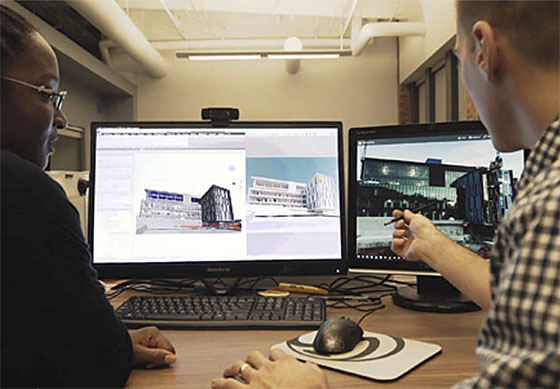
- Search
-
Login
-
0
ComparisonAdd products to compare, then they will appear here and you can compare parameters.
-
0
0 €Nothing in the basket.
Chaos Group V-Ray for Revit
Top accessories for Chaos Group V-Ray for Revit
Product description
V-Ray 3 for Revit is a professional rendering plug-in tailored to the unique needs of architects and designers. An intuitive interface and streamlined controls have made V-Ray 3 for Revit the most design-friendly renderer yet; providing a simple way to create high-quality renders directly in Autodesk Revit. V-Ray 3 for Revit is available for Windows and is compatible with Autodesk Revit 2015, 2016, 2017.

V-Ray 3 for Revit is built on the industry-standard rendering technology used by 92 of the top 100 architecture firms, and is ready for professional design and visualization projects, from imagery to VR. Optimized to handle large BIM datasets, V-Ray preserves the integrity of the BIM database, allowing architects to add realistic lights, cameras and materials using a non-destructive workflow.
V-Ray for Revit is the next link in Chaos Group’s mission to create a unified rendering standard for the AEC community. With updates to V-Ray for SketchUp and Rhino coming soon, projects will be able to look consistent, regardless of visualization application.
Top Ten Features Include:
- Design-Friendly Interface – Quickly balance quality and speed with V-Ray for Revit’s render presets. Work in draft mode for early iterations and switch to high quality for presentations.
- Physical Materials – Automatically convert Revit materials to V-Ray’s physically-correct format.
- Diagrammatic Materials – Easily make scenes look diagrammatic or like a scale model with material presets like basswood and foam core.
- Physically Based Lighting – Accurate options for IES and HDR image-based lighting, as well as support for Revit Sun and Sky.
- One-Click VR Output – VR cameras can help designers verify scale during the design process.
- Aerial Perspective – Add realistic atmospheric depth with aerial perspective.
- Section Boxes – Render sections easily with full support for Revit's native section boxes.
- Denoiser – Automatically removes artifacts and noise, cutting render times with GPU-acceleration.
- Material Editor – Import and edit VRmats exported from V-Ray for 3ds Max, Rhino and SketchUp.
- V-Ray Swarm – New web-based distributed rendering allows firms to speed up rendering times by using the power of all available desktops and render nodes.
ACCESSORIES (2)
Blackmagic Design DaVinci Resolve Studio
Blackmagic Design Fusion Studio
- Show all

Chaos Group V-Ray for Revit
V-Ray 3 for Revit is a professional rendering plug-in tailored to the unique needsCall us for pricing information




